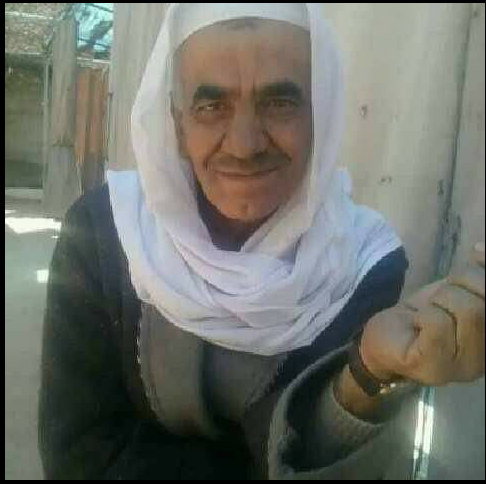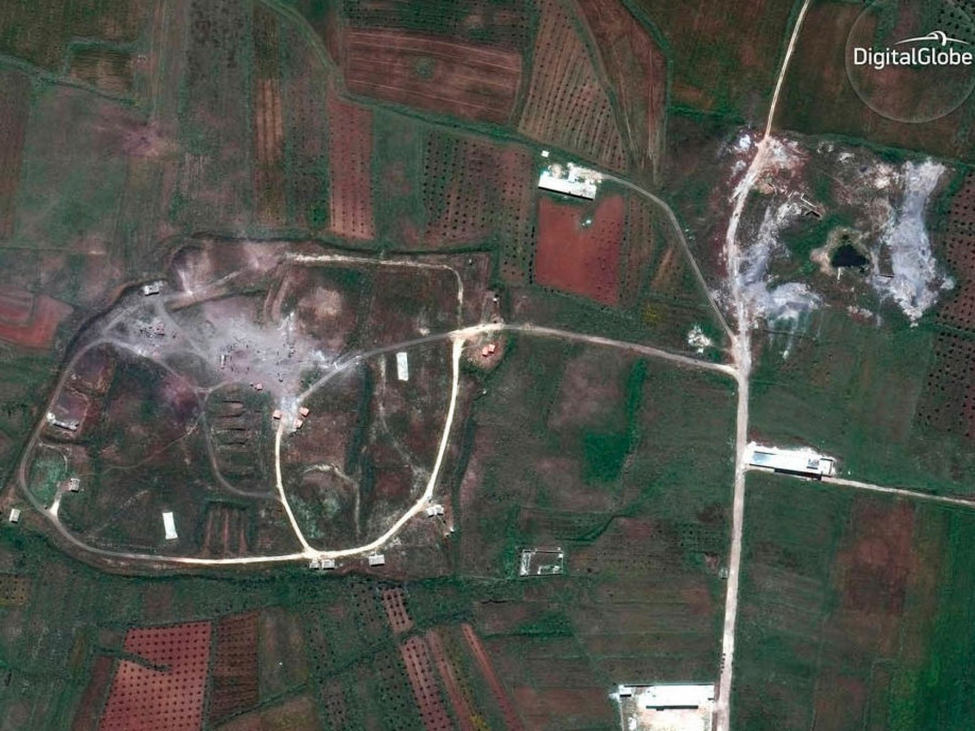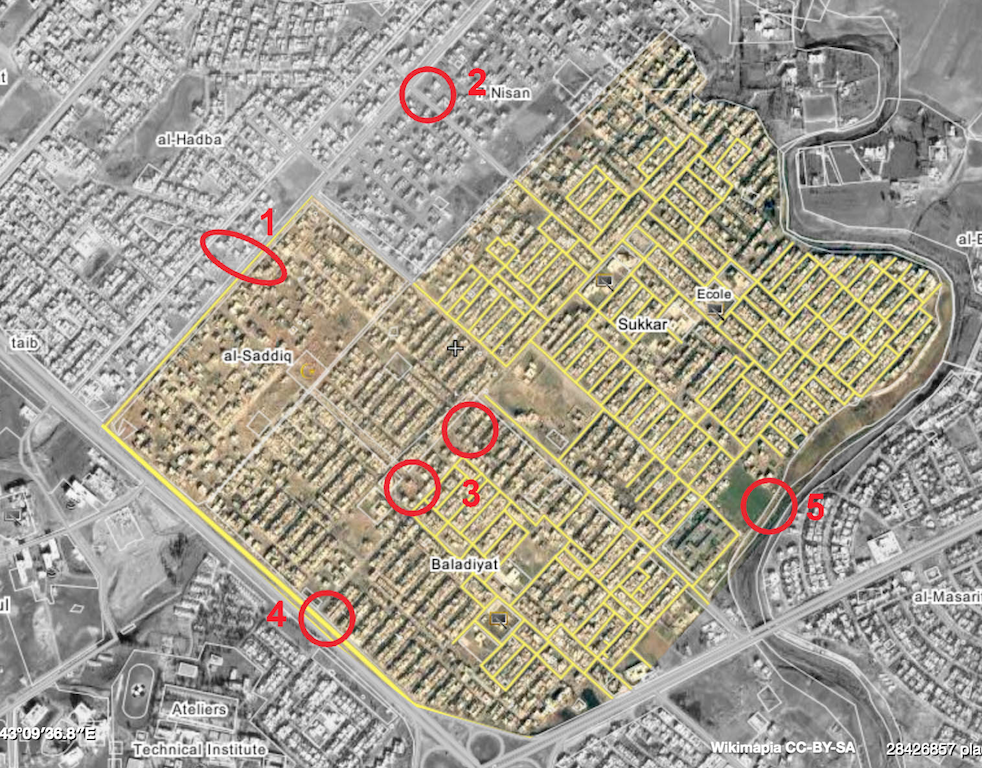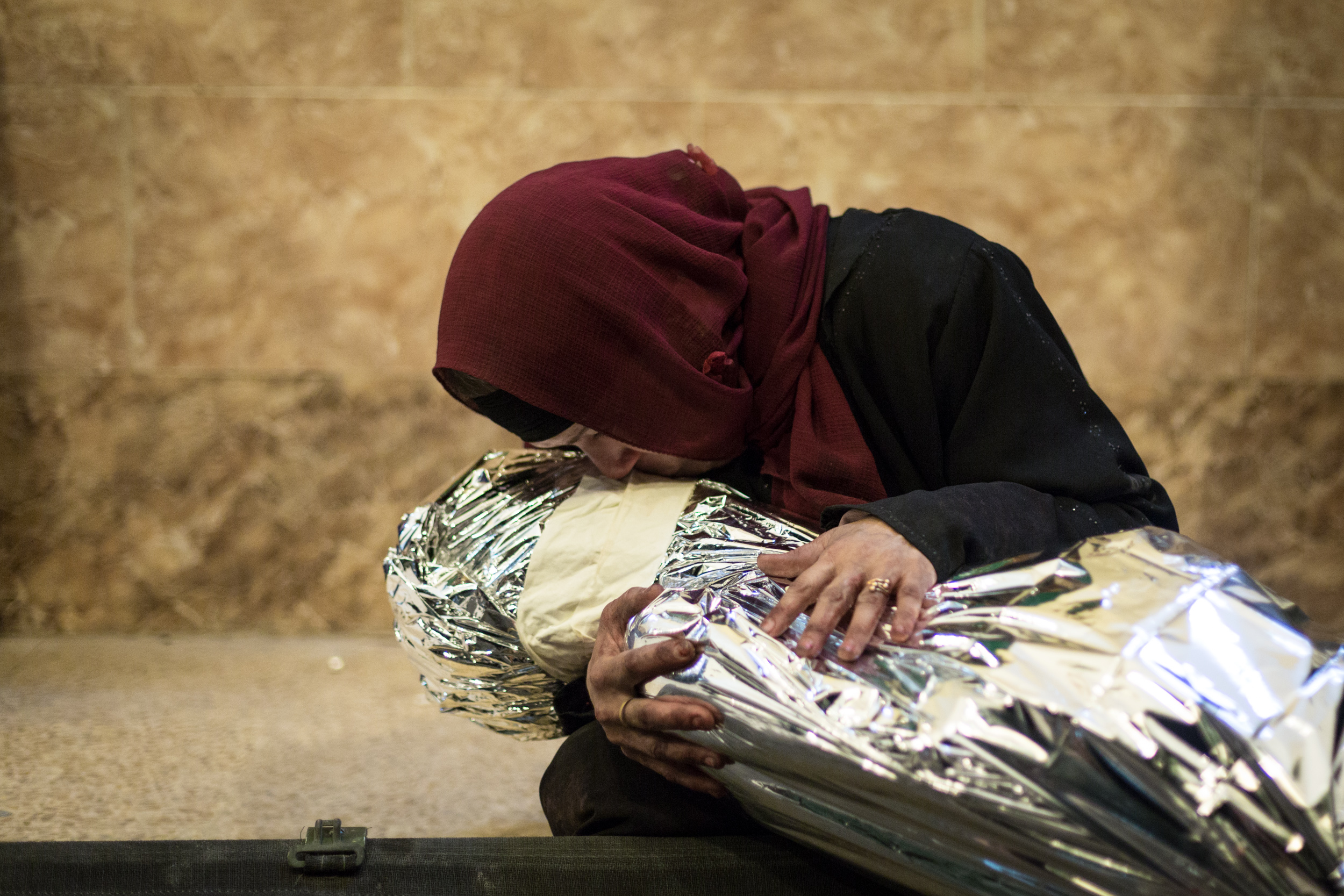Conflict monitoring
Following two months of brutal bombardment of eastern Ghouta by Assad government and Russian forces, there was finally some respite. After rebels struck a deal on April 1st to leave the formerly-opposition held enclave outside Damascus, Airwars tracked an 82% fall in casualty events alleged against Russia in the month that followed. There were just eight claimed incidents in Damascus during April, with Russian strikes now mainly focusing on Idlib – where civilians still faced significant danger. Overall, there were 45 claimed casualty events in Syria against Russia for April. Between 92 and 151 civilians were alleged killed in these incidents.
Meanwhile, likely deaths from Coalition air and artillery strikes fell to the lowest levels tracked by Airwars since the start of Coalition actions in August 2014. According to public reporting, just three civilians were likely killed by the US-led alliance in April 2018 – all in Syria.
However, the situation in Syria as a whole remained tense. April was also marked by US-led strikes against what were reported to be regime chemical weapons facilities, in retaliation for an alleged regime toxic gas attack of April 7th which killed at least 42 civilians. During those retaliatory actions, Airwars tracked credible claims that three civilians were likely wounded in a declared British strike on a chemical weapons storage facility in Homs.
The fall in civilian harm from airstrikes in Syria came even as new fault lines appeared. Tensions grew in eastern Syria, where the US and its allies continued to target the last remnants of ISIS-held territory. Attempts by the Assad government to sieze territory from the Coalition’s Kurdish SDF proxies saw the Western alliance again reportedly bombing pro-regime forces. Meanwhile, Israel launched heavy airstrikes against Iranian forces stationed across Syria, threatening to ignite a much wider regional war.
Russia and the regime in Syria: an 82% decrease in reported casualty events
After tracking record levels of alleged civilian harm in March, Airwars monitored an 82% fall in incidents of concern reportedly involving Russian aircraft in Syria during April. This came after a deal was struck with the regime for both rebels and civilians to flee eastern Ghouta.
In total, our researchers monitored 45 casualty events reportedly involving Russian aircraft in April – down from a record 250 incidents the month before. However, as is often the case in urban areas, the regime was frequently blamed alongside Russia for individual strikes.
Between 92 and 151 civilians were alleged killed by Russian actions in total during April – compared with the extremely high reported death toll of between 712 and 1,229 during March. These figures remain unvetted by Airwars, and are based on initial monitoring. They should not be compared directly with fully evaluated estimates tied to Coalition air and artillery strikes.
This sharp decrease in claimed deaths was largely attributable to a massive fall in allegations made against Russia in the densely packed urban enclave of eastern Ghouta, where fatalities had been very high in recent months. In total, there were just eight claimed Russian casualty events reported in the Damascus area in April, compared with 158 incidents the previous month.
“Following the peace deal, civilians were evacuated to Idlib and northern parts of Syria. However, they were far from out of harm’s way,” says Abdulwahab Tahhan who monitors Russian actions in Syria for Airwars. “During April, the majority of Russian civilian casualty events were tracked in Idlib governorate, where civilians were still being placed in significant danger from airstrikes.”
Russian incidents of concern in Syria
Despite the fall in allegations against Russia in Damascus during April, there were still a number of disturbing mass casualty events in the governorate.
The deadliest alleged incident in April occurred on April 6th at Douma, where up to 45 civilians including up to 10 children and 10 women died in multiple airstrikes. The highest estimate – of 45 fatalities – was given by LCCSY, which blamed a “heavy air and missile bombardment by regime forces”. According to the Syrian Network for Human Rights, “at least 40 civilians including four children and a woman died due to heavy shelling by Syrian/Russian regime forces”. Step said there had been “more than 50 air strikes loaded with high-explosive rockets” on the city. Douma Revolution 2011 meanwhile named 28 fatalities, adding that helicopters had also taken part in the ferocious bombardment.
Displaced civilians came under repeated bombardment during April as Syrian government forces also attempted to seize from ISIS the Yarmouk Palestinian refugee camp in Damascus. Between April 20th and 23rd, Airwars tracked four separate civilian harm events reportedly involving Russian or regime warplanes at Yarmouk, where fighting had destroyed civilian infrastructure and, according to the UN, resulted in the near-closure of access points for over 66,000 people in need.
On April 22nd six male civilians were reported killed in an alleged Russian or regime strike on the camp. According to the Syrian Network for Human Rights, “Syrian/Russian warplanes fired missiles on al Urouba Street in al Yarmouk Camp”. The source Marsad Hasaka, however, blamed solely Russia. The victims were named as Imad al-Rayyan, Anas Bassam Amouri, Haj Saleh Mahmoud, Muhannad Saleh Mahmoud, Jamal Samih Hamid Abu Khaled and Marwan Mahmoud Uqla (pictured.)

Marwan Mahmoud Uqla, killed in an alleged strike by Syrian or Russian planes on Yarmouk camo, (via SN4HR)
However it was Idlib – where many civilian evacuees from eastern Ghouta had just evacuated to – that faced the fiercest bombing by Moscow during April. In total, Airwars tracked 28 claimed Russian events in the governorate – 62% of all incidents during the month.
The most serious event occurred on April 9th in Wadi Al Nasim, when up to 28 civilians were reported killed and up to 150 more wounded in an explosion. While some sources, such as ANHA, said the source of the explosion wasn’t known, the Euphrates Post, LCCSY and Step News Agency were among many others claiming that the massacre had been caused by a ballistic missile fired from Russian battleships in the Mediterranean. Local media published graphic images that showed extensive destruction to civilian homes and blood-stained locals, including children. The Syrian Network for Human Rights which put the death toll at 21, said 13 of these victims were children and five were women, adding that it had been “unable to identify the type of the explosion or the perpetrating party”. Four child fatalities were named by Euphrates Post as Sila Murad Zakour, Shahla Assi (pictured), Saif Zakkour and Farah Kadrash.

‘The girl Shahla Asi, age 5, killed in an explosion in Wadi al Naseem area south of Idlib city, causing a massacre, on April 9, 2018’ (via SN4HR)
Coalition actions and reported civilian casualties: likely deaths fall to all time low
The known remaining active Coalition allies – the US the UK, France and the Netherlands – released 254 munitions from the air across Iraq and Syria during April 2018 according to official AFCENT data – a 14% drop from March’s 294 munitions.
In Iraq, the Coalition reported just 24 air and artillery strikes in April – down from 30 the previous month. For the second month in a row, there were no publicly reported Coalition incidents of concern anywhere in Iraq. The last known alleged Coalition casualty event in the country was on February 7th.
On April 30th, CJTF-OIR deactivated its Land Component Headquarters in a Baghdad ceremony, thereby “signifying the end of major combat operations against ISIS in Iraq and acknowledging the changing composition and responsibilities of the Coalition.”
In Syria, strikes also remained at low levels. Just 75 air and artillery strikes were declared – though this represented a 47% rise on March’s 51 strikes.
Of the still-active Coalition allies in April, the UK reported no airstrikes in Syria for the month – though it declared five strikes in Iraq (up from two in March). Similarly, France reported no strikes in Syria, but one strike and 16 artillery support missions in Iraq – the latter up from 14 actions in March.
The Netherlands publicly declared that weapons were deployed in only one mission (down from two in the previous month), between April 18th-24th. The Dutch Ministry of Defence said that during that week, its F-16s had attacked ISIS fighters in support of ground troops in the Abu Kamal area of Deir Ezzor, Syria.
On April 19th, the Coalition reported that the Iraqi Air Force also conducted airstrikes against ISIS targets near Hajin, Syria along the border. According to the Coalition press release, “the operation was planned and executed by the Iraqi Joint Operations Command with intelligence support from the Coalition”. Iraq had in turn co-ordinated the attack with the Assad government.
Coalition incidents of concern in Syria
Airwars researchers tracked just six alleged Coalition civilian casualty events during April, all of them in Syria. This was the same number of claimed events as in March. However, of these events only two are currently assessed as being fairly reported – with only one leading to civilian deaths, and the other resulting in injuries. An event is assessed as fair when it involves two or more uncontested and credible public sources, in addition to confirmation that the Coalition carried out strikes in the vicinity on the day.
Airwars’ current estimate is that 3 civilians likely died in the one event – with a further three likely wounded in the second incident. This represents an 81% fall from the minimum of 16 civilians assessed as likely killed by the US-led alliance during March – and the lowest number of civilians likely killed in any one month since Airwars began tracking reported civilian harm from Coalition actions in August 2014.
The event resulting in likely civilian deaths occurred on April 14th in the village of Al-A’liat in the Soussa district of Deir Ezzor. According to Smart News and Fresh Online, an ISIS HQ in the village was targeted by the Coalition. A local source told Smart that the three civilians had been present at the facility after being detained by ISIS on charges of drug abuse, ‘statements against sharia law’ and possession of pornography. Smart and Fresh added that three ISIS members also reportedly died in the strike.
On April 24th, the New York Times reported that following an exodus of Kurdish fighters from eastern Syria to Afrin to help repel Turkish forces, the US-led Coalition had changed tactics in eastern Syria as it sought to contain the last pockets of ISIS. The new approach reportedly involved more use of Intelligence, Surveillance and Reconaissance (ISR) and a tactic of “striking only when sure… the risk to civilians is low.” Airwars monitoring for the month did indeed show a significant reduction in reported civilian harm for the month.
US-led strikes on Syrian regime chemical weapons facilities
On April 14th – in response to the alleged Assad regime chemical weapons attack in Douma, Damascus on April 7th – the US, UK and France launched more than 100 missiles at what were reported to be government chemical weapons facilities in Syria.
According to the Pentagon, the strikes targeted three sites: a scientific research facility in Damascus; a chemical weapons storage facility 15 miles outside the city of Homs; and a second weapons storage facility and command post also around Homs. The strikes, heralded as a success by US President Donald Trump, were in turn condemned by Syria’s ally Russia.
Airwars tracked a single source claim by Al Sura which alleged that four civilians had died in the US bombardment of the Al Barzah scientific research facility in Damascus. However, Airwars did not identify any other public reporting of civilian casualties relating to strikes in the Al Barzah neighbourhood – and concluded that this single source claim was not credible. Moreover, a spokesperson for the Syrian defense ministry publicly stated that “only buildings were damaged” in the strike.
Airwars did however assess that three civilians were likely wounded as a result of reported British strikes on a military compound west of Homs. According to the Syrian Observatory for Human Rights and a report by Dostor News – both of which quoted Syrian state-run new agency SANA – rockets which targeted Syrian army warehouses were either deflected or missed their target. The explosion of one missile reportedly wounded three people. An Assad government statement, clipped by BBC Arabic, also stated that three civilians were injured in this strike.

Sky News aerial footage of the “Shinshar chemical weapon facility” in Homs after it was targeted by the airstrike.
On April 29th – in a further deterioration of relations between the US-led alliance and the Assad govenment – between 25 and 60 regime forces and militia were reported killed in Coalition airstrikes on Jai’aa village and al Kalab hospital in Deir Ezzor governorate, local media reported. According to Deir Ezzor 24, pro-regime troops had captured a number of towns in western Deir Ezzor from Kurdish SDF forces, prompting Coalition strikes. Reuters quoted a US Army statement which confirmed the attack on SDF forces by what it called pro-regime forces near Deir Ezzor City, adding that the “Coalition used established deconfliction channels to de-escalate the situation” – though it did not elaborate on the methods were used.
Alleged Israeli strikes in Syria
Just two days after the alleged regime toxic gas attack in Douma, Israel was suspected of launching an April 10th strike on the T-4 Syrian military base near Homs (which crucially had a strong Iranian presence). Russia, Syria and Iran all blamed Israel, though Israel itself refused publicdly to comment on the event as fears of yet another proxy war in Syria grew. However Israeli media – citing government sources – later confirmed that this was indeed an IDF action.
Tensions continued to mount throughout the month, with veiled threats from both sides. This culminated in a significant incident on April 29th, when between 26 and 40 fighters were reported killed with up to 60 more wounded in alleged Israeli strikes targeting the 47th Brigade of the Iranian Revolutionary Guard, south of Hama at Jabal al Bouthouth mountain. Additionally, Iranian warehouses near Salhab town were said to have been struck. According to The Guardian, 26 pro-government fighters were killed, though the Shaam News Network put the death toll as high as 40.
While no civilians were reported harmed in this event, Syrian-based opposition media activist Mohamad Rasheed said that the strike result in explosions in an arms depot at the Maarin Mountain, 10 km outside of the city of Hama. Parts of the exploding missiles reportedly struck the city itself, forcing local residents to flee their homes.
Libya: Haftar returns
In terms of airstrikes, Libya experienced a relatively quiet month in April 2017, which was likely connected to the rumours of Field Marshal Khalifa Haftar’s poor health. The Libyan National Army leader had been hospitalised in Paris and reports on his status ranged from a mild stroke to cerebral bleeding and even death. With the security situation in Libya at risk of deteriorating due to the rumours – a car bomb targeted his potential successor Abdul Razzaq Alnadouri – Haftar returned to Libya on April 26th to resume his role as head of the LNA.
During Haftar’s absence, the only reported LNA airstrikes were said to have targeted the jihadist Benghazi Defence Brigades near Saddada, southeast of Bani Walid city. The strikes reportedly killed three militia members, according to the sources Alqualish Alhadath and Fouad Al-Zoui. Libya Alahrar reported that the casualties were members of the Oil Installation Guards, which raised questions about their combatant status.
On the same day, April 21st, four strikes were carried out by an unidentified aircraft, also near Bani Walid, near the Castle of the Shemikh. Libya 24 said 16 alleged militants were killed and 9 more injured. The LNA denied responsibility for the strikes, with its spokesperson claiming that the US, Italy or another NATO country was to blame. However AFRICOM explicitly denied conducting the strikes in a statement to Airwars, insiosting: “There have been no US airstrikes in Libya since March 24.”
During the month of April, clashes in Sebha city between the Tebu and Awlad Suleiman tribes also re-escalated after a temporary ceasefire. Heavy shelling was carried out in populated areas, with clashes reportedly causing multiple casualties among both fighters and civilians. There were reports of three civilian deaths, including one young girl and a 60-year-old man in Sebha city.
صورة للغارة الجوية التي استهدفت مخازن الذخيرة والتموين التابعة لميليشيات الجضران التي كانت تستعد للهجوم على الحقول النفطية والمتمركزة في قلعة بني وليد قرب السدادة pic.twitter.com/uKVNK5zyLq
— أعصر عليه ليمة (@libyanlemons) April 24, 2018
A tweet showing the reported strike on the 28th May Battalion, used by Benghazi Defence Brigades (BDB), in which oil installation guards were also reportedly killed and injured.
Airwars advocacy
Military advocacy
The Airwars military advocacy team continued its information exchange with the Coalition’s own civilian casualties cell, helping to improve understanding of civilian harm allegations on both sides . We proactively provided improved geolocations for a batch of historical civilian casualty allegations between January and June 2015, and all claimed events that occurred in October 2017. In total, 141 events were reassessed by our geolocators and submitted to the Coalition for the review. The Coalition has in turn confirmed that these events will be processed.
We also received from the Coalition the approximate locations (to an accuracy of 100m) for many of the civilian casualty incidents published in its own March and April monthly reports. Additionally, the Airwars military advocacy team provided assistance to ARTE and BBC investigations into alleged civilian casualty strikes in Mosul. Two team members also attended a data visualisation workshop arranged by the Centre for Investigative Journalism in London.

Locations of possible air strikes in East Mosul neighbourhoods during January 2017. The strike damage assessments were conducted via satellite imagery analysis. Base map: Wikimapia
European advocacy
European advocacy officer Koen Kluessien was invited by our funder, the Netherlands-based Democracy and Media Foundation, to set out how the work of Airwars contributes to the protection and promotion of human rights, democracy and the rule of law. Koen addressed attending journalists, researchers and activists and explained how Airwars’ innovative use of local open source data provides a vital counter to the narrative of a clean and precise air war routinely employed by the Dutch government and others.
Additionally, Koen contributed to an Airwars article that provided much-needed context on a progress report on Dutch involvement in the anti-ISIS Coalition that had been presented to Parliament on April 13th. This had revealed for the first time that Dutch aircraft had caused civilian harm – something the Netherlands had always denied. Yet crucially, the report did not state when or exactly when between 2014 and 2016 the incidents took place – making public scrutiny of the incidents impossible. Further Airwars research and advocacy efforts regarding the four cases is still ongoing.
News from Airwars
On April 5th, Airwars released an extensive investigation into the civilian death toll during the battle for Mosul. Cross-published with The Atlantic, the feature noted that thousands of civilians had credibly been reported killed by all parties during the fight. A number of journalists and researchers who had visited the city during the battle were interviewed.
Despite the reported high toll, neither the Coalition nor those countries individually involved in operations to dislodge ISIS from Iraq’s second city were making any attempt to reach an official civilian death count, Airwars noted.
The report by Samuel Oakford also featured an exceptional series of images by photographer Maranie Staab, who had visited a frontline trauma clinic during the fight for West Mosul.

A mother cradles her dead child, killed in a reported airstrike on West Mosul, spring 2017 (Image coursesy of Maranie Staab. All rights reserved.)
Protecting your Data and GDPR Compliance
As a not for profit transparency organisation, Airwars regards the lawful and fair treatment of personal information as very important to its successful operations, and to maintaining confidence between our team and all those who use and access our services. To see more about how we are complying with the EU’s new General Data Protection (GDPR) Regulation 2018, please see our Data Protection Statement.
Iraq, Syria and Libya analysis: Kinda Haddad, Salim Habib, Abdulwahab Tahhan, Shihab Halep, Koen Kluessien, Oliver Imhof, Osama Mansour, Poppy Bowers, Eeva Sarlin, Samuel Oakford, Sophie Dyer, Laura Bruun, Anna Zahn and Chris Woods.

